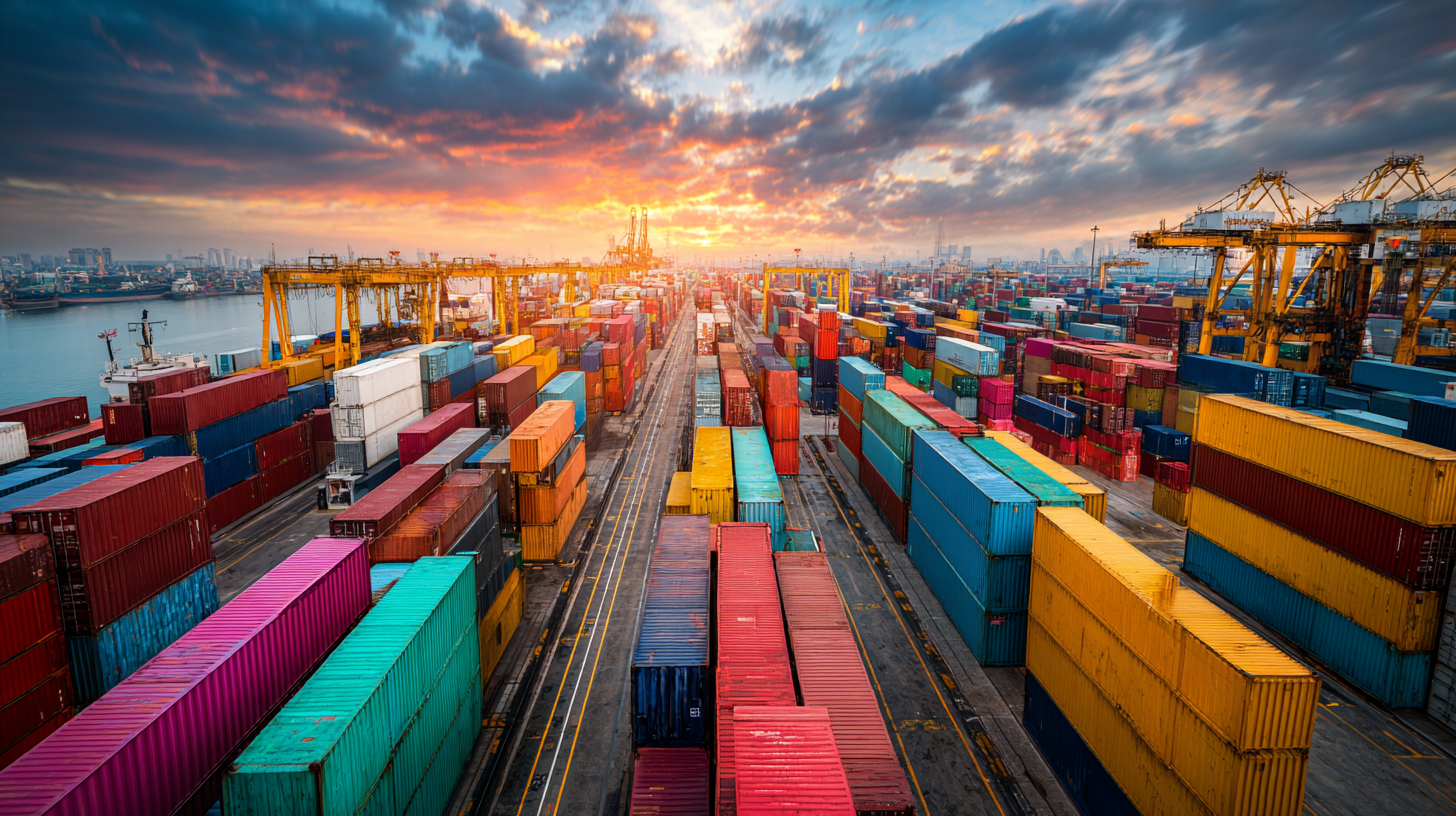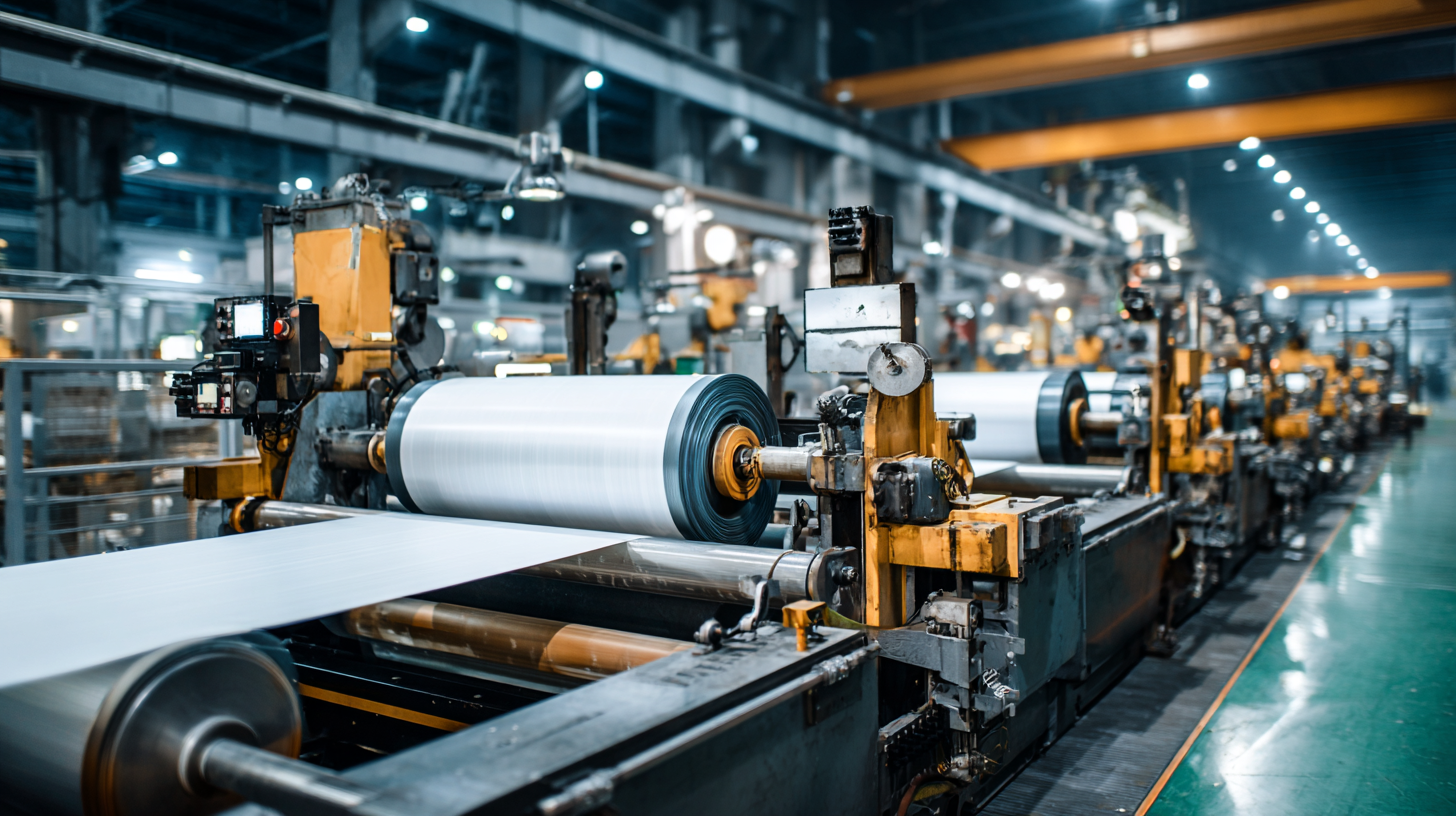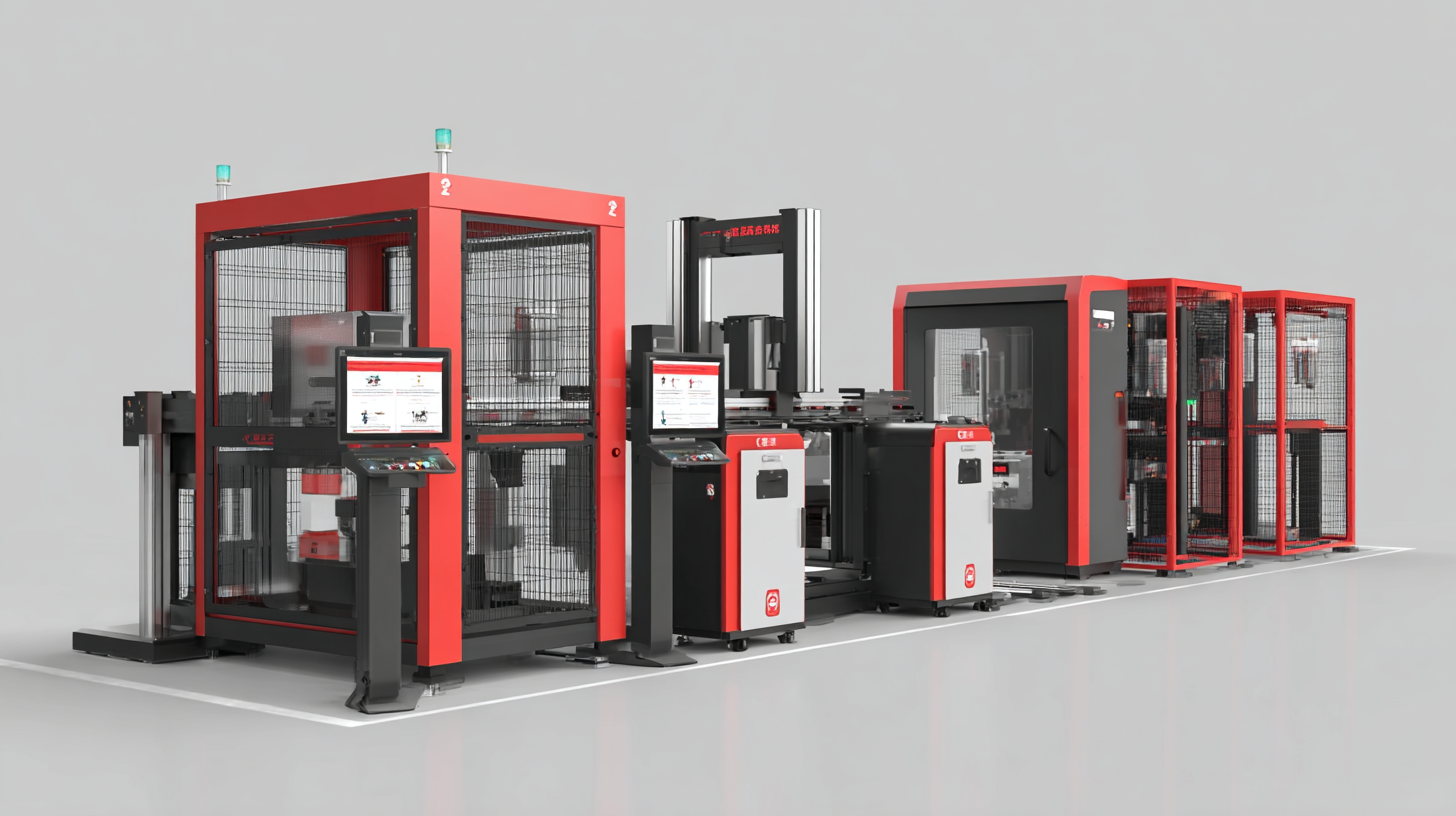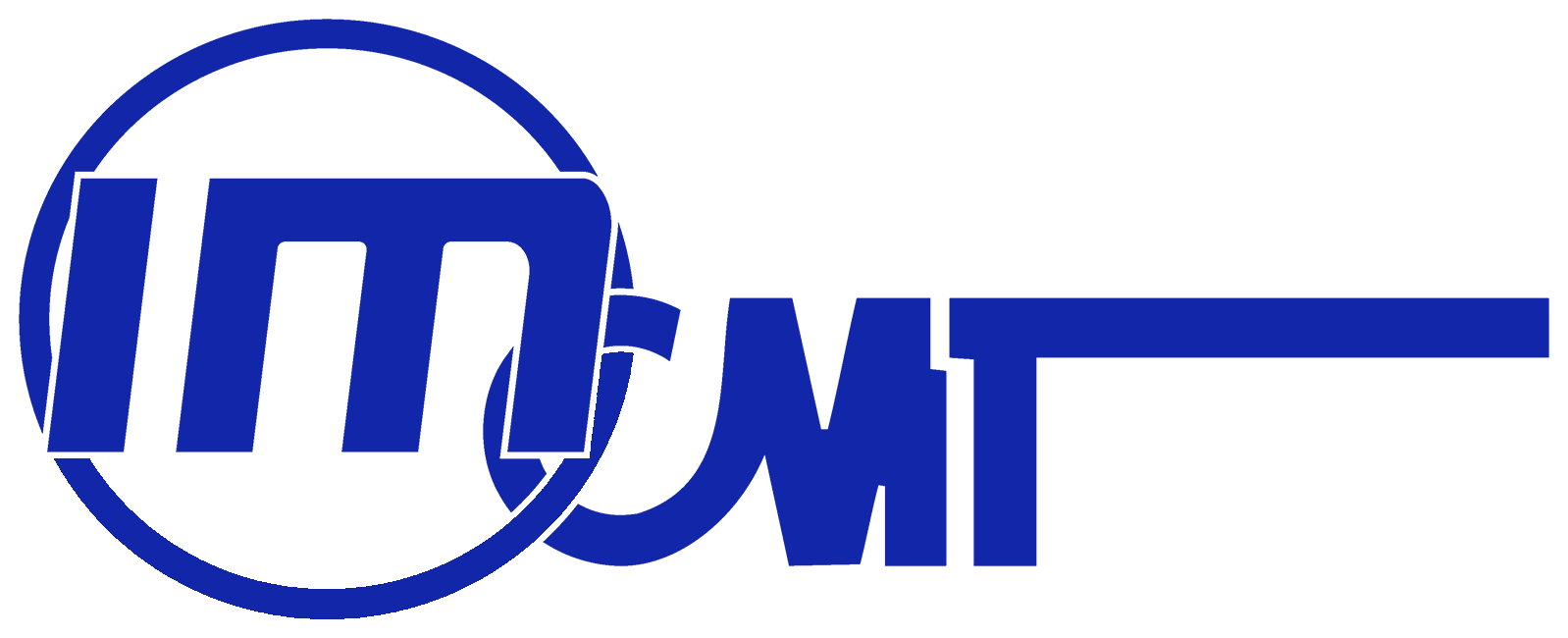Unveiling the Top 5 Industrial Marking Systems: A Comprehensive Comparison for Global Buyers
In an era where precision and compliance are paramount, the demand for efficient Industrial Marking Systems has surged significantly. According to a recent report by MarketsandMarkets, the global industrial marking systems market is projected to reach USD 5.2 billion by 2025, growing at a CAGR of 6.3% from 2020. This growth is driven by the increasing need for traceability and product identification across various sectors, including automotive, electronics, and food packaging. As manufacturers strive to enhance operational efficiency and adhere to stringent regulations, the choice of an effective marking system becomes critical. This blog aims to unveil the top five industrial marking systems, providing a comprehensive comparison for global buyers looking to make informed decisions in an evolving marketplace. By analyzing key features, advantages, and application scenarios, we will help businesses navigate the complexities of selecting the ideal marking solution for their unique needs.

Top Considerations When Evaluating Industrial Marking Systems in 2023
When evaluating industrial marking systems in 2023, buyers must consider several critical factors to ensure the selection meets their operational needs. First, the technology employed in marking systems is paramount. A report from Freedonia Group indicates that laser marking systems have seen a market growth of over 7% annually, showcasing their effectiveness in providing high precision and durability for various materials. This data underscores the importance of investing in advanced technology that enhances production efficiency and product traceability, particularly as industries move towards automation.
Another significant consideration is compliance with regulatory standards. As industries worldwide face increasing scrutiny regarding product safety and traceability, adhering to marking regulations becomes essential. According to a study by MarketsandMarkets, the global demand for marking and coding equipment is projected to reach $5.4 billion by 2025, largely driven by stringent compliance requirements in sectors such as food and beverage and pharmaceuticals. Buyers must assess whether the systems they are considering can meet these regulatory needs while remaining cost-effective and efficient in marking processes.
Comparison of the Top 5 Industrial Marking Systems in 2023
Understanding the Key Features and Technologies in Industrial Marking
When it comes to industrial marking systems, understanding the key features and technologies is crucial for global buyers. These systems play a significant role in product identification, quality control, and compliance with regulatory standards. The most popular technologies include inkjet, laser, and thermal transfer marking. Each of these has its own set of advantages; for example, laser marking offers high durability and precision but can be costly, while inkjet systems are often more affordable and versatile.
Tip: When selecting a system, consider the materials you will be marking. Some technologies work better on specific surfaces, so ensure the marking method aligns with your production requirements.
Another vital feature to investigate is the speed and efficiency of the marking system. High-speed systems can significantly reduce production downtime, allowing for faster workflows and increased output. Additionally, features such as user-friendly interfaces and software integration can simplify operations and improve overall productivity.
Tip: Assess the scalability of the marking system. As your business grows, your marking needs may evolve, so choose a system that can adapt to changing requirements without requiring a complete overhaul.
Analyzing the Cost-Benefit Ratio of Different Marking Solutions
In today's competitive industrial landscape, the cost-benefit ratio of marking solutions is crucial for global buyers seeking both efficiency and quality. According to a report by MarketsandMarkets, the global industrial marking systems market is projected to reach USD 6.1 billion by 2026, growing at a CAGR of 4.8% from 2021. This growth highlights the increasing recognition of efficient marking technologies that not only enhance product traceability but also optimize manufacturing processes.
When evaluating different marking solutions, buyers must assess factors such as initial investment, operational costs, and potential savings through reduced downtime. For instance, laser marking systems, though typically more expensive upfront, offer a longer lifespan and lower maintenance costs compared to inkjet or thermal transfer printers. Research from Technavio indicates that employing laser marking can lead to cost savings of up to 30% over the equipment’s lifespan. Hence, investing in higher-quality marking systems can provide substantial returns in the long run, making it imperative for buyers to thoroughly analyze their options before making a decision.
Unveiling the Top 5 Industrial Marking Systems: A Comprehensive Comparison for Global Buyers
| Marking System | Cost (USD) | Maintenance Cost (Annual) | Durability (Years) | Marking Speed (Items/Min) | Technology Type | Cost-Benefit Ratio |
|---|---|---|---|---|---|---|
| Laser Marking | 5,000 | 500 | 10 | 30 | Non-contact | 9.0 |
| Inkjet Printing | 3,000 | 350 | 5 | 50 | Contact | 8.5 |
| Dot Peen Marking | 4,000 | 400 | 7 | 20 | Non-contact | 8.0 |
| Thermal Transfer | 2,500 | 200 | 6 | 40 | Contact | 8.8 |
| Labeling Systems | 1,800 | 150 | 4 | 60 | Contact | 7.5 |
Identifying Reliable Suppliers: What Data Says About Industry Reputation
In the fast-evolving realm of industrial marking systems, selecting reliable suppliers is paramount for global buyers. According to a recent industry report by MarketsandMarkets, the industrial marking and coding market is projected to reach USD 6.9 billion by 2025, growing at a CAGR of 5.2%. As such, the demand for reputable suppliers becomes critical, as businesses seek to invest in advanced technologies while ensuring product quality and compliance.
Data from Smithers Pira further highlights that 70% of companies consider supplier reliability a key factor in their procurement strategies. A further breakdown of this data reveals that 65% prioritize suppliers with a proven track record in the relevant sector. This underscores the importance of due diligence and thorough research when evaluating potential partners. Buyers should leverage databases such as Dun & Bradstreet and industry-specific certification programs to gauge a supplier's reputation, performance history, and customer reviews. By focusing on these metrics, global buyers can uncover trustworthy suppliers who not only meet their marking needs but also contribute to their overall operational excellence.

Navigating Global Standards and Compliance for Industrial Marking Systems
When it comes to industrial marking systems, navigating global standards and compliance is crucial for organizations striving for success in a competitive market. According to a recent report by MarketsandMarkets, the global industrial marking systems market is projected to reach USD 3.8 billion by 2026, growing at a CAGR of 5.2%. This growth underscores the increasing need for businesses to adhere to various international regulations, emphasizing the importance of investing in reliable marking solutions that meet compliance requirements.

One essential tip for ensuring compliance is to stay informed about the latest regulatory standards applicable to your industry. For instance, compliance with ISO 9001 can enhance quality management systems and project credibility. Additionally, adopting marking systems that offer flexibility and adaptability to different standards like RoHS and REACH helps companies sustain their market presence while reducing risks associated with non-compliance.
When selecting industrial marking systems, buyers should also consider solutions that feature advanced technology, such as laser marking and inkjet printing, which can significantly improve marking precision and durability. These technologies are not only compliant with stringent regulations but are also adaptable to various substrates and environments, ensuring long-lasting visibility and traceability. Therefore, making informed decisions based on compliance standards is a strategic approach in today’s dynamic industrial landscape.
